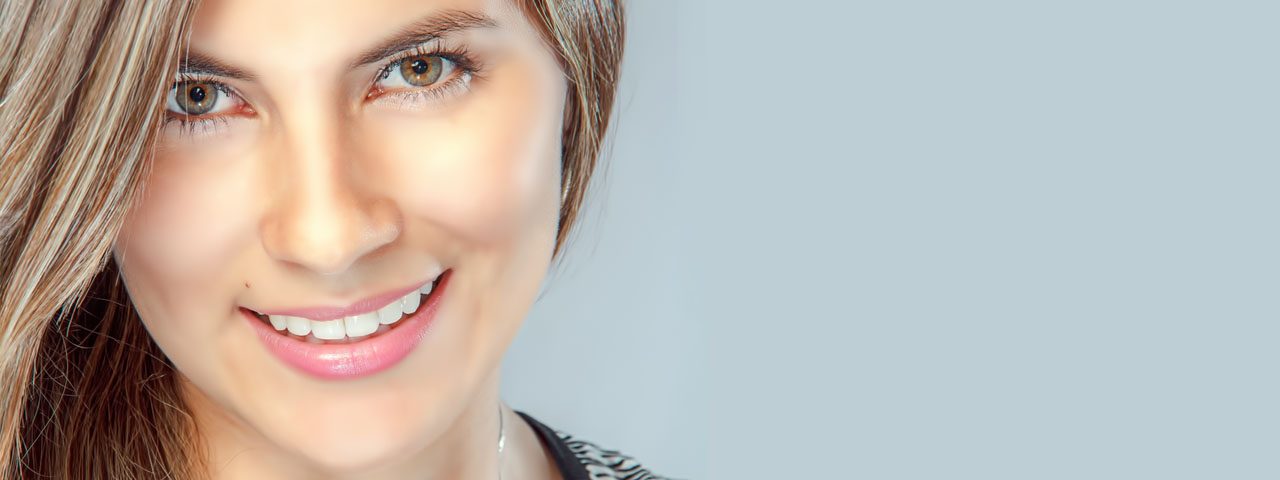
For many people, contact lenses provide greater convenience and more satisfying vision correction than eyeglasses. Here's what's involved in a typical contact lens exam and fitting in Westchester, NY.
A comprehensive eye exam comes first
Before being fit with contact lenses, a comprehensive eye exam is performed. In this exam, Dr. Schwartz, your optometrist in Hartsdale, NY, determines your prescription for corrective lenses (just a glasses prescription at this point) and checks for any eye health problems or other issues that may interfere with successful contact lens wear.
If all looks good during your eye exam, the next step is a contact lens consultation and fitting.
What to expect during a contact lens fitting
The first step in a contact lens fitting is a consideration of your lifestyle and your preferences regarding contact lenses, such as whether you might want to change your eye color with color contact lenses or if you're interested in options such as daily disposables or overnight wear. Although most people choose soft contact lenses, the advantages and disadvantages of rigid gas permeable (GP) lenses will likely be discussed as well.
If you are over age 40 and need bifocals, Dr. Schwartz will discuss ways to deal with this need, including multifocal contact lenses and monovision (a prescribing technique where one contact lens corrects your distance vision and the other lens corrects your near vision).
Contact lens measurements
Just as one shoe size doesn't fit all feet, one contact lens size doesn't fit all eyes. If the curvature of a contact lens is too flat or too steep for your eye's shape, you may experience discomfort or even damage to your eye. Measurements that will be taken to determine the best contact lens size and design for your eyes include:
- Corneal curvature: An instrument called a keratometer is used to measure the curvature of your eye's clear front surface (cornea). This measurement helps Dr. Schwartz select the best curve and diameter for your contact lenses. If your eye's surface is found to be somewhat irregular because of astigmatism, you may require a special lens design of lens known as a "toric" contact lens. At one time, only gas permeable contact lenses could correct for astigmatism. But there are now many brands of soft toric lenses, which are available in disposable, multifocal, extended wear and colored versions.
- Corneal topography, also known as photokeratoscopy , is a non-invasive medical imaging technique for mapping the surface curvature of the cornea, the outer structure of the eye. It is essential as a baseline when fitting contact lenses and to monitor any corneal changes that may occur. Since the cornea is normally responsible for some 70% of the eye's refractive power, its topography is of critical importance in determining the quality of vision. Corneal topography provides extremely precise details about surface characteristics of the cornea and creates a surface "map" of your eye, with different contours represented by varying colors.
- Pupil and iris size: The size of your pupil and iris (the colored part of your eye) can play an important role in determining the best contact lens design, especially if you are interested in GP contact lenses. These measurements may be taken with a lighted instrument called a biomicroscope (also called a slit lamp) or simply with a hand-held ruler or template card.
- Tear film evaluation: To be successful wearing contact lenses, you must have an adequate tear film to keep the lenses and your cornea sufficiently moist and hydrated. This test may be performed with a liquid dye placed on your eye so your tears can be seen with a slit lamp, or with a small paper strip placed under your lower lid to see how well your tears moisten the paper. If you have dry eyes, contact lenses may not be right for you. Also, the amount of tears you produce may determine which contact lens material will work best for you.
Trial Lenses
In many cases, trial lenses will be used to verify the contact lens selection. Lenses will be placed on your eye and Dr. Schwartz will use the slit lamp to evaluate the position and movement of the lenses as you blink and look in different directions. You will also be asked how the lenses feel.
You'll typically need to wear these trial lenses for at least 15 minutes so that any initial excess tearing of the eye stops and your tear film stabilizes. If all looks good, you will be given instructions on how to care for your lenses and how long to wear them. You will also receive training on how to handle, apply and remove the lenses.
Follow-up visits confirm the fit and safety
Your contact lens fitting will involve a number of follow-up visits to your local eye doctor. In these visits, Dr. Schwartz can confirm the lenses are fitting your eyes properly and that your eyes are able to tolerate contact lens wear. A dye (like the one used to evaluate your tear film) may be used to see if the lenses are causing damage to your cornea or making your eyes become too dry.
Often, Dr. Schwartz will be able to see warning signs before you are aware a problem with your contact lens wear is developing. If such warning signs are evident in your follow-up visits, a number of things may be recommended, including trying a different lens or lens material, using a different lens care method, or adjusting your contact lens wearing time. In occasional cases, it may be necessary to discontinue contact lens wear altogether.
Your contact lens prescription
Routine contact lens exams
Regardless of how often or how long you wear your contact lenses, your eyes should be examined at least once a year to make sure your eyes are continuing to tolerate contact lens wear and show no signs of ill effects from the lenses. We also provide fittings for specialty contact lenses.

